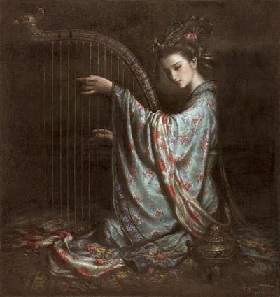A Brief History of Dunhuang
In ancient times, Dunhuang was the center of trade between China and its western neighbors. At that time, it was the most westerly frontier military garrison in China. With the flourishing of trade along the Silk Road, Dunhuang was prompted to become the most open area in international trade in Chinese history. It provided the only access westward for the Chinese Empire and eastward for western nationalities. Today, as a reminder of this historical area, we are left with the Mogao Caves, Yangguan Pass, Yumenguan Pass and many wonderful Chinese poems depicting the time. Although what remains of the two Passes are crumbling walls, one can still experience the atmosphere of that time while visiting in person.
Today, Dunhuang is a typical tourist city, clean and beautiful. Because of its splendid stone caves, tourism has become an indispensable industry to Dunhuang City. Surrounding establishments include various classes of hotels and restaurants for your choosing. As well, tourism personnel are knowledgeable and well trained these days. For a western city in China, it has become more accesible for people to come and go as they please. Transportation is much more efficient, ensuring that your wonderful trip runs smoothly. May to September is the best time to visit, so be sure to plan your trip during these months. Including Dunhuang City in your tour is a decision you won't regret!
Dunhuang City, an obvious pearl on the Silk Road, opens her arms to welcome tourists from all over the world.
 Picture from:ebigear.com
Picture from:ebigear.com
The first recorded history of Dunhuang, a vital station along the legendary Silk Road, was related by Emperor Wu of the Han Dynasty (206 B.C.-220). However, modern archaeological findings trace the region's history as far back as the Xia Dynasty (21st–16th century B.C.). During the Shang and Zhou Dynasties over the next 1,400 years, the area was inhabited by three nomadic tribes—the Qiang, Wusun and Yuezhi (Rouzhi). At the end of the Qin Dynasty (221 B.C.–206 B.C.), the Yuezhi conquered the other two tribes and occupied the entire Hexi Corridor. This corridor (also called Gansu Corridor) was the primary segment of the ancient Silk Road. Later, the Hun (or Xiongnu) armies vanquished the Yuezhi and established dominance here during the early Han Dynasty. From the early seventh century B.C., Chinese kingdoms built walls along their northern frontiers to defend themselves against the warlike Huns. During the Han Dynasty, the most ambitious Great Wall project to date was begun with four systems of fortification spanning from Dunhuang in the west all the way to the Korean peninsula in the east.
|

